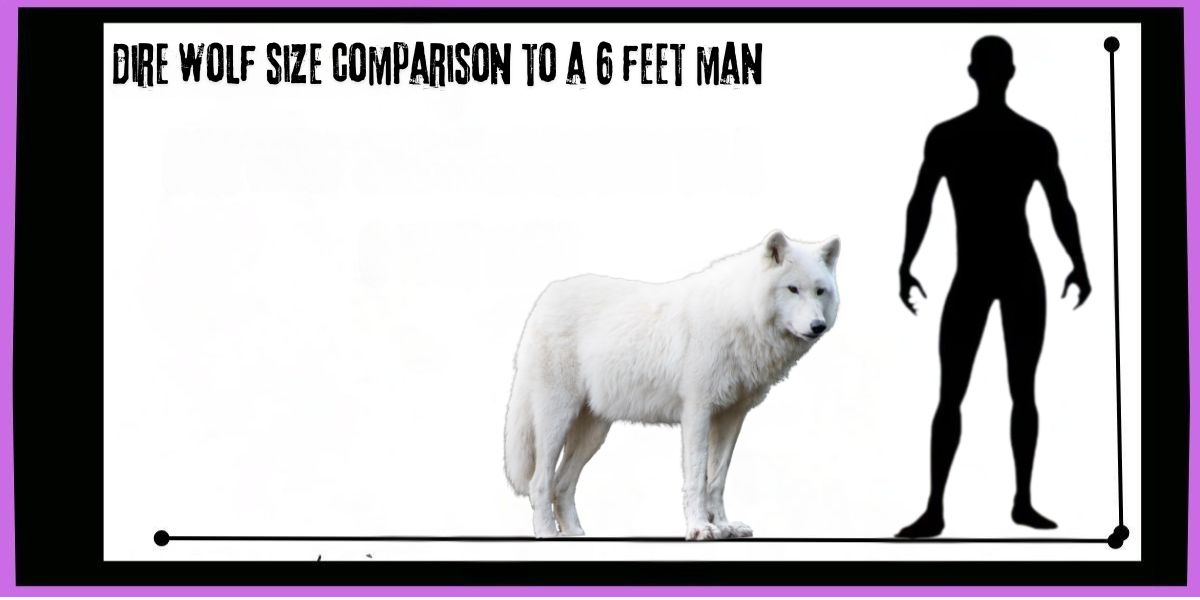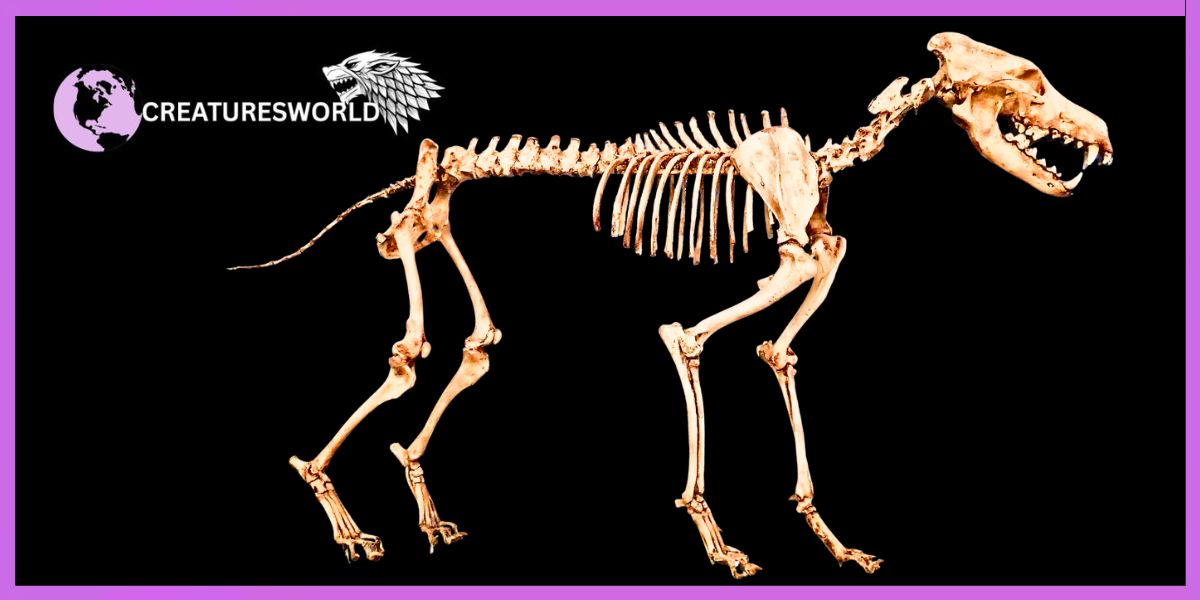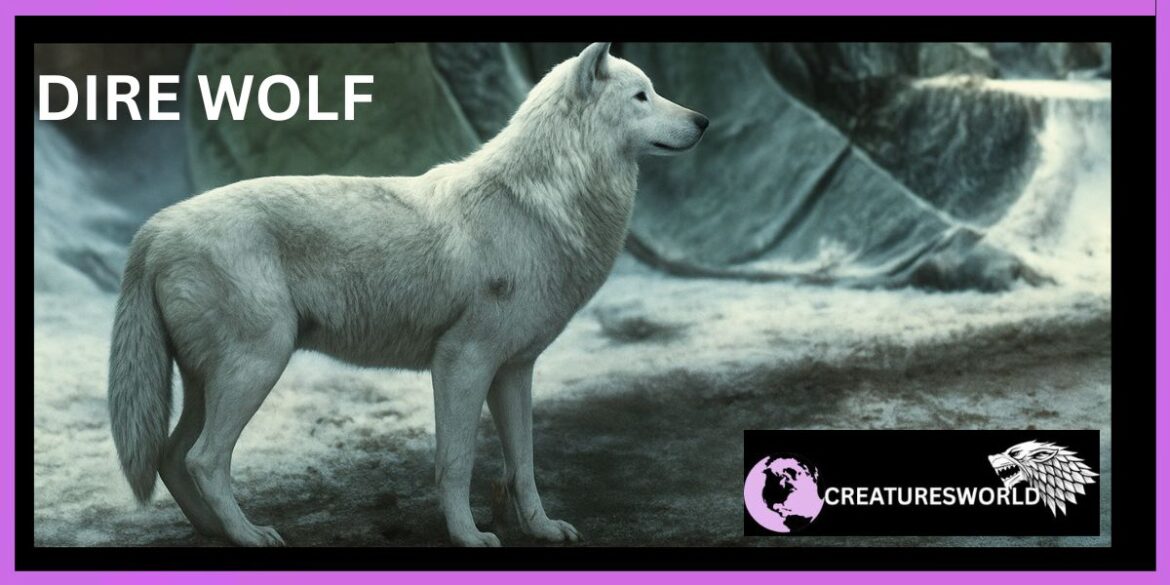The Dire Wolf, scientifically known as Aenocyon dirus, Their name means the “Terror Wolf”. Are one of the biggest wolfs to ever lived and because of their size, power and most important the pack of them is most dangerous.
The Dire Wolf Origin And Evolution
The dire wolf evolved around 250,000 years ago in North America. It did not descend from the same ancestor as the modern gray wolf (Canis lupus), but instead followed a separate evolutionary line. In fact, DNA studies reveal it was not even in the genus Canis — hence its reclassification in 2021 as Aenocyon dirus.
-
Ancestry: Likely evolved from Canis armbrusteri, an earlier wolf-like species in North America.
-
Isolation: Dire wolves evolved independently from gray wolves, with no interbreeding between the two.
The Dire Wolf Physical Characteristics
Dire Wolves weren’t just some big wolves — they were something beyond imagination. These beasts were around 5 feet long from nose to tail, with a shoulder height of nearly 3.5 feet and weighed somewhere between 130 to 200 pounds, and some of them even crossed 100 kg! They had a body built like a tank — thick bones, broad chest, and pure muscle — not made for running fast, but for grabbing, crushing, and dominating. Their legs were shorter than modern wolves, but that made them more powerful, giving them solid grip and balance while hunting heavy prey.
Their skull was massive, and they had a wide, strong snout perfect for tearing through giant animals. The brow ridges were so defined, it made their face look even more serious and dangerous. On top of that, they had something called a sagittal crest — a bone ridge that shows just how insanely strong their jaw muscles were.
Now their teeth? Not just for biting — they were made for shredding flesh and crushing bones. With 42 huge, thick, blunter teeth, they could break down almost any bone to get the marrow out. Their bite force was nearly double that of today’s wolves — that’s serious power. These guys weren’t afraid to go after bison, horses, camels, even giant sloths.
Their legs and paws were super strong — short but sturdy, with sharp claws and wide paws to hold down prey and move through rough terrain. We don’t have fossils of their fur, but considering the Ice Age vibes, they probably had thick, heavy coats, maybe brown, grey, or black — great for blending in.
And their eyes? Most likely forward-facing like modern predators, which means they had great depth perception. Maybe even amber or golden-colored eyes, just like wild wolves today. Plus, they had an incredible sense of smell and hearing, and most likely could see well in the dark — probably hunted at night or during early dawn/dusk.

To sum it up — Dire Wolves were power monsters, not built for long chases but for raw, crushing takedowns. They weren’t like the Game of Thrones fantasy wolves — the real ones were far scarier, more real, and more majestic in their own deadly way.
The Dire Wolf Fossil Record
Dire wolves are one of the most common fossil finds in North America.
-
La Brea Tar Pits (California): Over 4,000 dire wolf fossils have been recovered here.
-
Fossils found from Alberta to Peru, showing their wide geographic range.
-
Usually found with broken bones or signs of conflict — evidence of pack hunting and scavenging.
- Some fossils show signs of healed injuries, suggesting they were cared for by their pack.
-
Over 100,000 fossils: Found across the U.S., especially in California.Dire wolves went extinct about 10,000 years ago, at the end of the Ice Age.
The Dire Wolf Diet, Behaviour, Habitat And Hunting Habits
Carnivorous Apex Predator
-
Diet: Large Pleistocene mammals — bison, camels, ground sloths, horses, mastodons, and even megafauna like saber-toothed cats.
-
Hunting Style: Likely pack hunters, similar to gray wolves but more aggressive.
-
Their stronger jaws allowed them to consume more bone and marrow than gray wolves.
-
Evidence suggests scavenging was also common, especially in late Pleistocene.
-
Social Animals: Likely lived in packs, similar to modern wolves.
-
Evidence from fossil sites shows multiple individuals dying together, hinting at cooperative behavior.
-
Possible hierarchy, like alpha-beta structure seen in modern wolf packs.
- The Dire Wolf lived in a wide variety of habitats, including forests, grasslands, rocky foothills, cold tundras, and wetlands, showing how incredibly adaptable and widespread this powerful predator once was.
The Dire Wolf VS Other Ice Age Predators
The Late Pleistocene was filled with giants and killers — here’s how the Dire Wolf stacked up:
| Predator | Strength | Weakness |
|---|---|---|
| Dire Wolf | Strong bite, team hunting, bone-crushing power | Slower, less adaptable |
| Smilodon (Saber-Toothed Cat) | Ambush predator, long killing canines | Weak bite force, fragile teeth |
| Short-Faced Bear | Gigantic size, strong, intimidating | Possibly solitary and slow |
| Gray Wolf | Fast, adaptable, clever | Smaller and weaker bite than dire wolves |
Dire Wolves weren’t the fastest or most agile, but they had teamwork, raw strength, and were built for power-based takedowns.
The Dire Wolf Evolutionary Surprise
For a long time, scientists believed dire wolves were just bigger cousins of Gray Wolves — but in 2021, a DNA study flipped the story.
-
Dire wolves were not closely related to Gray Wolves, coyotes, or domestic dogs.
-
Their DNA showed they belonged to a completely separate lineage, which had been evolving in North America for millions of years.
-
That’s why they were reclassified under a new genus: Aenocyon, which means “terrible wolf.”
So despite their look, they weren’t just oversized wolves — they were something more ancient, more unique, and completely separate.
Did Dire Wolves Interact With Early Humans?
Yes — it’s very likely.
-
Dire wolves lived alongside early Native Americans and possibly competed with them for prey.
-
There’s no direct evidence that humans hunted them, but it’s possible humans saw them as dangerous rivals or feared predators.
-
Some legends and ancient art might even be inspired by creatures like dire wolves — though proving that is difficult.

Dire Wolf Skeleton
The Dire Wolf Conclusion
Dire Wolves are very unique creatures, they are pure raw strength and miracle of nature which are bring back alive but i will tell about them in another article for that click on the link.
Everything I ( I, Kabir Thakur) have written here is thought out and well research processed Information. Please comment me for your doubts and to correct me if I am wrong.

